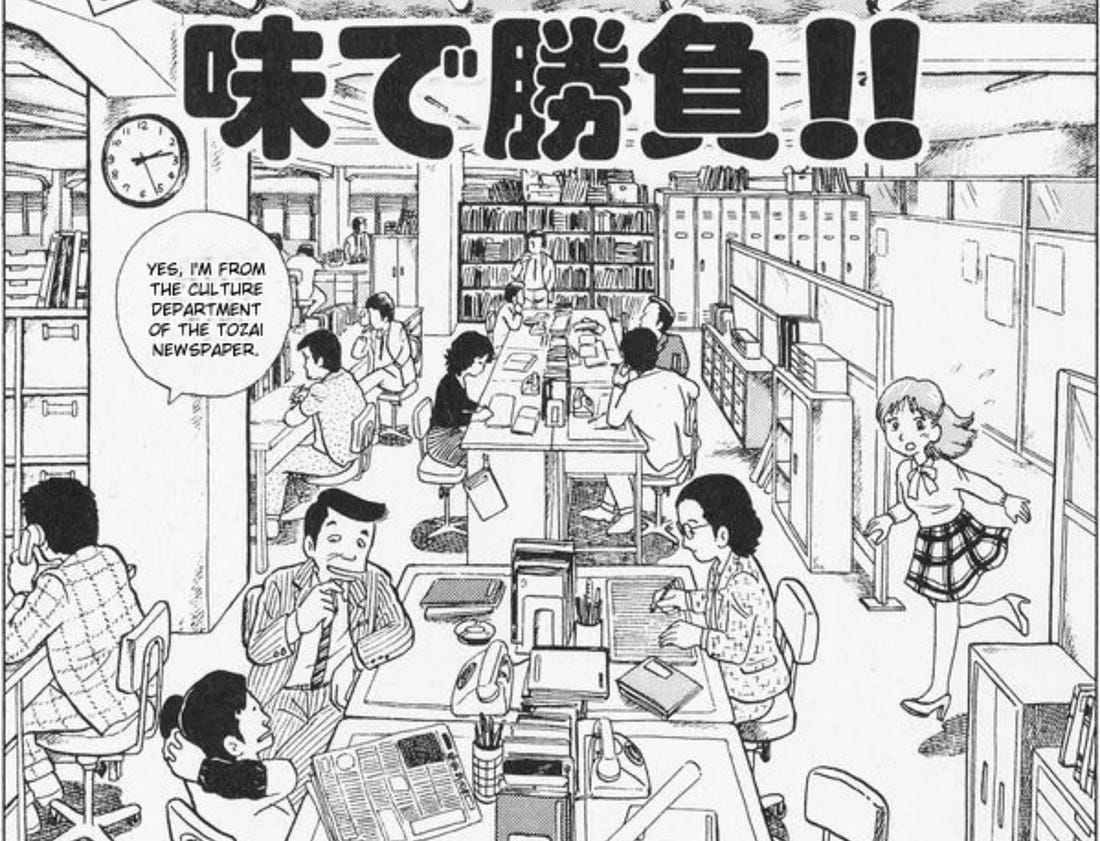Oishinbo, the manga that fictionalizes my media dream job
Imagine a world with not just one, but two newspapers with an endless budget for immersive food journalism.
Hello Lunch Box readers,
It’s a blistering sunny Saturday morning in Southern California and I’m about to head to the beach. I’m stuck in one of those writing jams where I’m half-finished with three different pieces, trying to figure out how to organize a lot of random material. So I wrote this last night to serve as conceptual connective tissue. I’m about to publish pieces on whaling, Anime Expo and how beef shaped the U.S. Japan trade relationship, but before that, I thought it would help to explain the thread connecting these topics for me: my favorite manga, Oishinbo.

I’ve been a working journalist for nearly two decades. And I believe that earns me one paragraph to explain why I think anime is worth your attention before you label me as an unsocialized dork and start ghosting my messages.
Anime is the video product derived from manga. And manga is a century-old print medium with a brutally competitive publishing schedule that functions as a large hadron collider for story, genre and archetype. Hundreds of new titles are released each year and that chaotic creative fission is what makes anime look so outlandish to the uninitiated eye. We’re like cavemen trying to parse third generation Twitch emotes.
Manga channels successful tropes from all over the world. Anime transforms those raw materials - paper, pencil and impossible workloads - into billion dollar IP’s that have become the language of the internet, the raw material for memes, communities and content.
Half of the fun of following anime and manga comes from trying to get it. No one thinks they will become fans of the weirder, shriller, more garish stuff, the source of the stereotypes mocked in American media. But as soon as you craft some understanding of their context, genres which seemed alien and utterly devoid of entertainment value can become fountains of dopamine. And that process of acquiring new tastes is addicting. Being a modern anime fan is like wandering a vast eternal garden, tripping out on bites of strange, hallucinatory fruit.
Keep reading with a 7-day free trial
Subscribe to Lunch Box to keep reading this post and get 7 days of free access to the full post archives.





